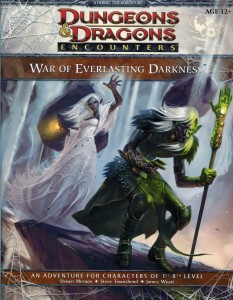While the Dungeon’s Master team enjoys some well-deserved vacation time, we’re breaking out the greatest hits and shining a spotlight on a few of our favourite articles from 2012. We’ve searched for hidden gems that our newer readers might have missed and our long-time readers will enjoy reading again. Enjoy a second look at these greatest hits from Dungeon’s Master.
I strongly believe that the overwhelming majority of gamers are good people. It’s unusual for a gamer to intentionally be a dick. But there are certainly shades of grey when it comes to dickish behaviour. When it comes to minor infractions, pet peeves if you will, it’s up to all of us to identify the problem and work together to fix it. Of course what bothers me may not be a big deal to you and that’s where we get the shades of grey.
My own experience taught me that everyone has their own gaming-related pet peeves. There are things the people in my regular gaming group do that I don’t like and I’m sure there are things I do that they don’t like. In some cases the issues stem from personality clash, but in some cases it stems from ignorance. The former is tough to deal with, the later not so much… at least it shouldn’t be.
If someone at the table does something that bothers you should say something? Personally I would, but that’s just me. I’m a very direct person. I know that if you ignore a problem it doesn’t usually get better. But for many gamers this is not something they feel comfortable doing, especially if the person isn’t a close friend (think of situations during public-play or at a con).
Now think about it from the point of view of the person demonstrating dickish behaviour. There’s a good chance they don’t know that what they’re doing is causing problems. If you don’t tell them, how can they be expected to change? Nobody likes a player who’s being a dick, so as tough as some players may find this conversation I think a fellow gamer would appreciate the feedback. That’s just my two cents.
One more thing – when I ran this article the first time it was quickly brought to my attention that the original Character Builder is still available online and that some dedicated members of the gaming community have kept it updated as new materials come out. So keep this in mind when you get to the section “Ensure your character sheet is accurate.”
From July 16, 2012, Dungeon’s Master once again presents: Don’t Be a Dick – 4 Tips for Following Wheaton’s Law.
 Last week we completed season 11 of D&D Encounters: War of Everlasting Darkness. It was a short season running only 8 weeks (9 if you count the week 0), but it was jam packed full of stuff. In my opinion this was one of the best seasons so far, but that’s not to say it didn’t have some challenges. Today I provide the good folks at Wizards of the Coast with my report card for season 11. I share what I liked about this season and what I didn’t like. I try to be honest and provide constructive criticism.
Last week we completed season 11 of D&D Encounters: War of Everlasting Darkness. It was a short season running only 8 weeks (9 if you count the week 0), but it was jam packed full of stuff. In my opinion this was one of the best seasons so far, but that’s not to say it didn’t have some challenges. Today I provide the good folks at Wizards of the Coast with my report card for season 11. I share what I liked about this season and what I didn’t like. I try to be honest and provide constructive criticism.